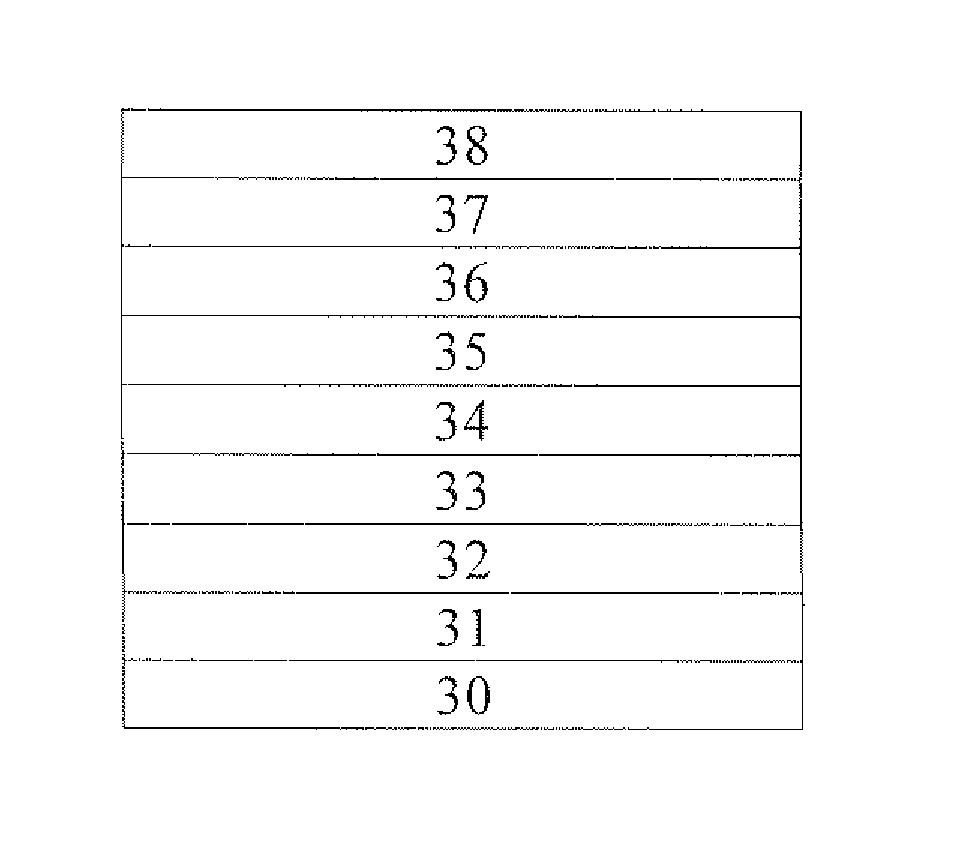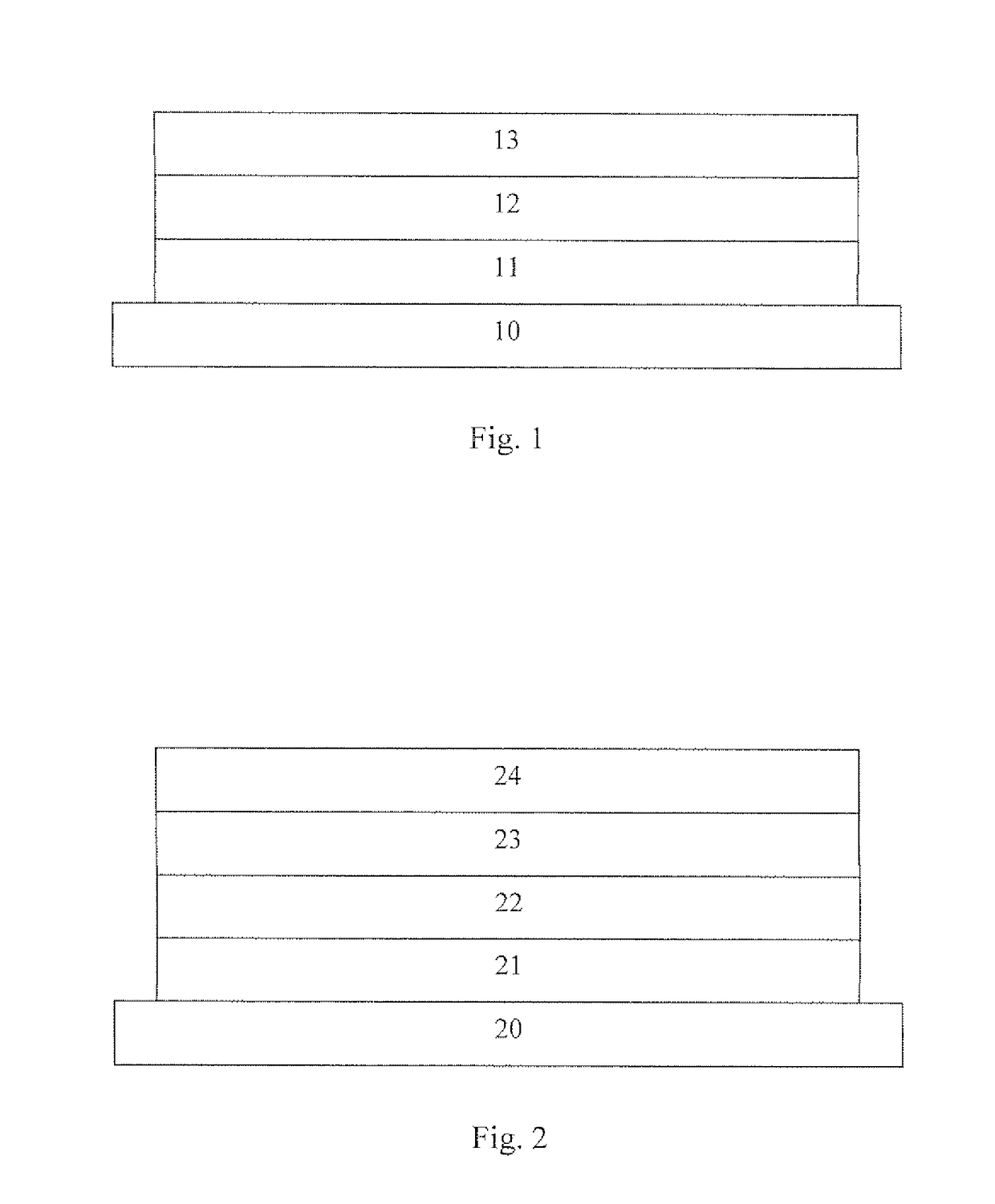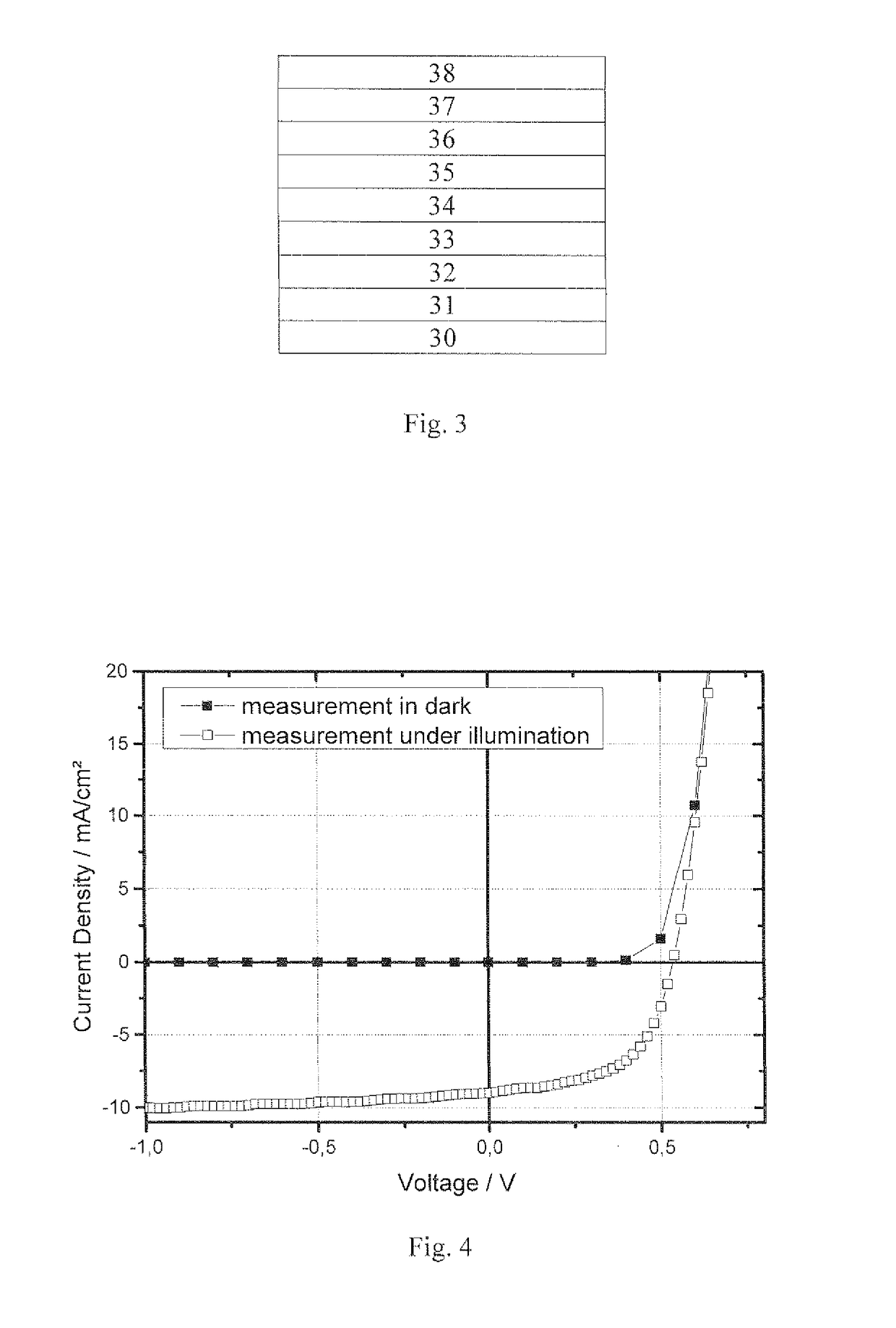Electronic Device and Compound
- Summary
- Abstract
- Description
- Claims
- Application Information
AI Technical Summary
Benefits of technology
Problems solved by technology
Method used
Image
Examples
synthesis example 1
N-(chloro(dimethylamino) methylene)-N-methylmethanaminium chloride (I2)
[0085]37.8 mL (440 mmol) oxalyl dichloride were added slowly to a solution of 10.5 mL (88 mmol) 1,1,3,3-tetramethylurea in 60 mL chloroform under argon atmosphere. After stirring for 16 hours at 85° C. (under reflux), the solvent was distilled off and the residue washed with diethyl ether. After drying in vacuo, 14.9 g (87.6 mmol; 99.5%) N-(chloro(dimethylamino) methylene)-N-methylmethanaminium chloride were obtained.
synthesis example 2
2-chloro-1,3-dimethyl-1H-benzo[d]imidazol-3-ium hexafluoro phosphate (I3)
[0086]To 12.5 g (81.9 mmol) 2-chloro-1H-benzo[d]imidazole in 175 ml water, 20.6 g (245.7 mmol) sodium hydrogen carbonate and 46.6 mL (491.5 mmol) dimethyl sulphate were added. The mixture was stirred 10 hours at 80° C. After cooling to 0° C., 30 mL hydrogen hexafluoro phosphate(V) were added. Filtration of the precipitate, washing with water and drying in vacuo gave 14.84 g (45.44 mmol; 55%) 2-chloro-1,3-dimethyl-1H-benzo[d]imidazol-3-ium hexafluoro phosphate.
synthesis example 3
1-(chloro(piperidin-1-yl)methylene)piperidin-1-ium chloride (I4)
[0087]33 mL (38.4 mmol) oxalyl dichloride were added slowly to 15.3 g (7.8 mmol) di(piperidin-1-yl)methanone in 150 mL chloroform under argon atmosphere. The mixture was stirred for 20 hours at 80° C. After distillation of the solvent and drying in vacuo, the 1-(chloro(piperidin-1-yl)methylene)piperidin-1-ium chloride was used for the next synthesis step without further purification.
PUM
| Property | Measurement | Unit |
|---|---|---|
| Thickness | aaaaa | aaaaa |
| Thickness | aaaaa | aaaaa |
| Electric potential / voltage | aaaaa | aaaaa |
Abstract
Description
Claims
Application Information
 Login to View More
Login to View More - R&D
- Intellectual Property
- Life Sciences
- Materials
- Tech Scout
- Unparalleled Data Quality
- Higher Quality Content
- 60% Fewer Hallucinations
Browse by: Latest US Patents, China's latest patents, Technical Efficacy Thesaurus, Application Domain, Technology Topic, Popular Technical Reports.
© 2025 PatSnap. All rights reserved.Legal|Privacy policy|Modern Slavery Act Transparency Statement|Sitemap|About US| Contact US: help@patsnap.com



